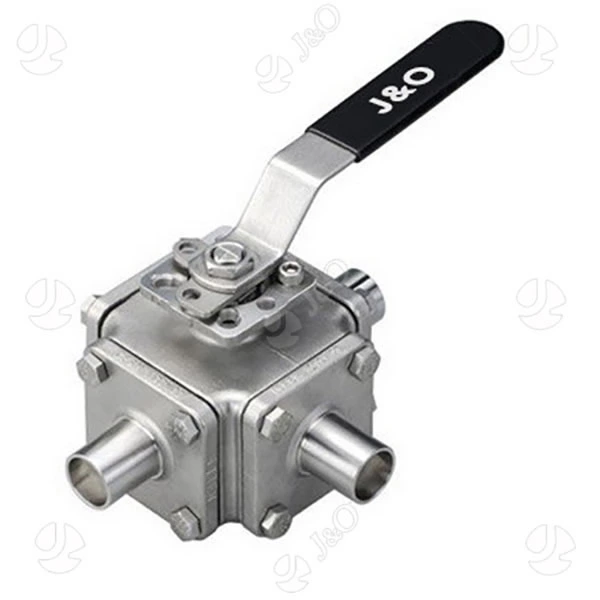What Are The Differences Between Sanitary Ball Valves And Ordinary Ball Valves?
What is the difference between Sanitary Ball Valve and ordinary ball valve?
First, what is a "ball valve"? Ball valve: A valve whose opening and closing parts (ball) are driven by the valve stem and rotate around the axis of the valve stem. It is mainly used to cut off or connect the medium in the pipeline, and can also be used for fluid regulation and control. The characteristics are: fast operation speed of full opening and full closing.
sanitary valve refers to stainless steel 304SS or 316 material, standard electronic polishing, smooth surface to ensure cleanliness, no medium accumulation area, no potential pollution, and can meet the special requirements of various media in the food and biopharmaceutical fields. The smooth, seamless, and automatically emptying manual fluid channel of the sanitary valve is also very suitable for the need of steam stepping on it for on-site cleaning. The connection method of the sanitary valve can be selected according to the project profile in the form of thread, flange, welding, clamp, ferrule, etc.
The difference between tri clamp ball valve and ordinary ball valves is:
1. Valve body material sanitary 3 way valve can only use 304SS, 304L or 316, 316L stainless steel, and they are specially treated after production and processing. Industrial valves can use cast iron, cast steel, ductile iron, stainless steel, and a wider range of materials. Because the use environment of sanitary valves is pharmaceutical, food, daily chemical, etc., which have very high sanitary requirements, these products are edible or directly in contact with the human body, so some of the machinery produced must have very high sanitary conditions. Ordinary valve materials such as steel, iron, and copper cannot meet these conditions. Let’s talk about steel and iron first. As valves, these materials will corrode and rust if the humidity in the liquid or air is relatively high, thereby contaminating the product. The same is true for copper valves, and copper rust is still a toxic substance, so it cannot be used as a sanitary valve.
2. Appearance: Standard electronic polishing of sanitary 3 way ball valve ensures cleanliness with smooth surface, no medium accumulation area, and no potential pollution. Industrial valves are generally formulated according to the needs of use, mainly for long service life and flexible operation under high temperature and high pressure working environment. The appearance and interior are not as smooth and beautiful as sanitary valves, but sanitary valves cannot be replaced in many places.
3. Connection method: sanitary valves generally use clamps and threaded connections; while industrial valves have flanges, threads, quick installation, welding, etc.
